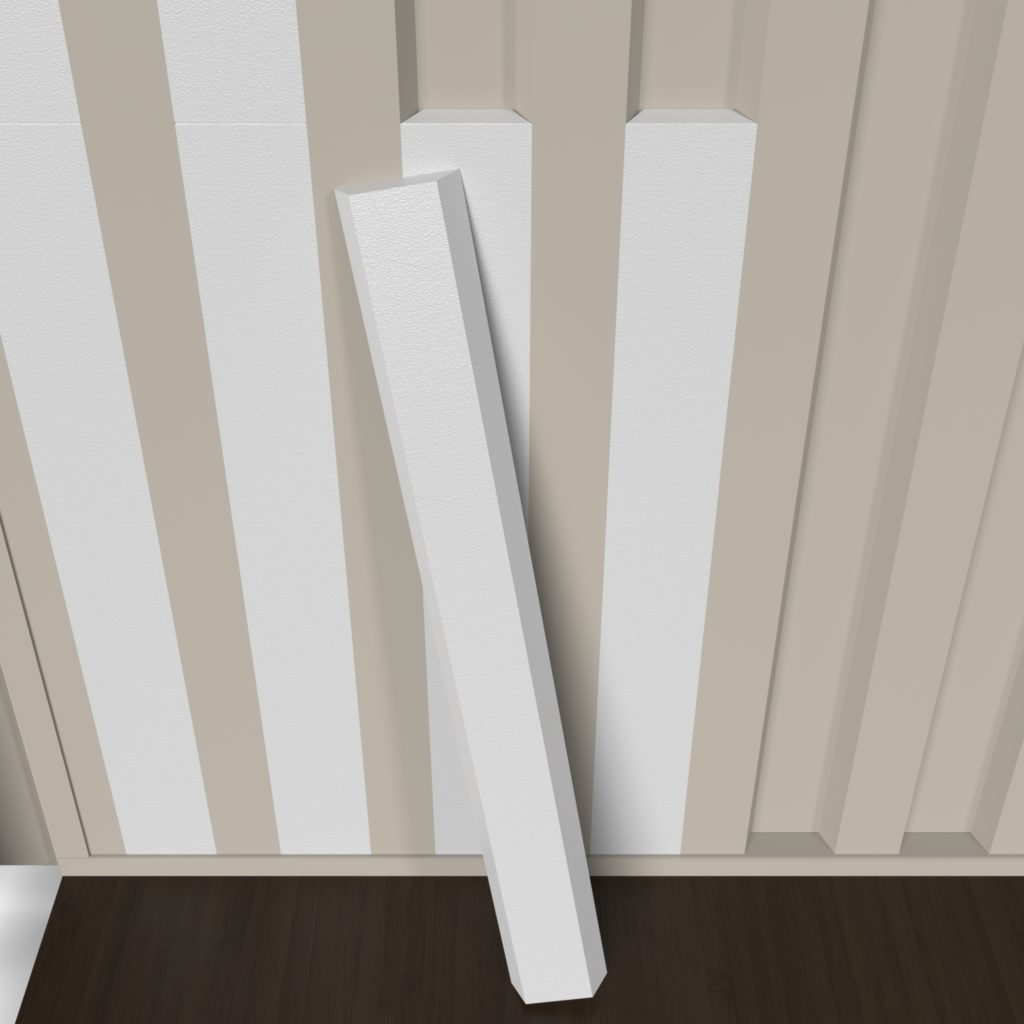Endwall Inserts Installation
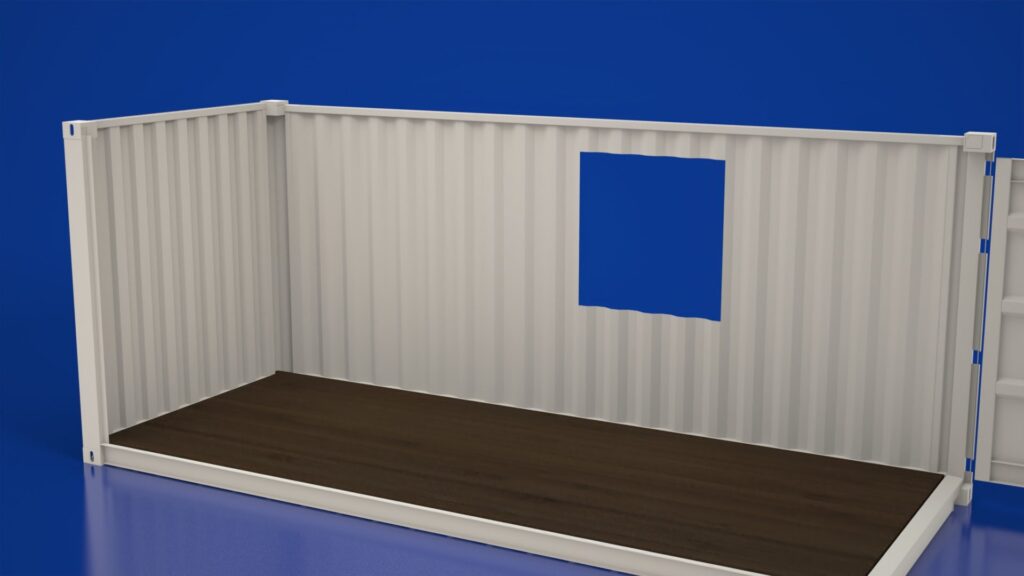
Endwall Insert and Flat Stock Foam
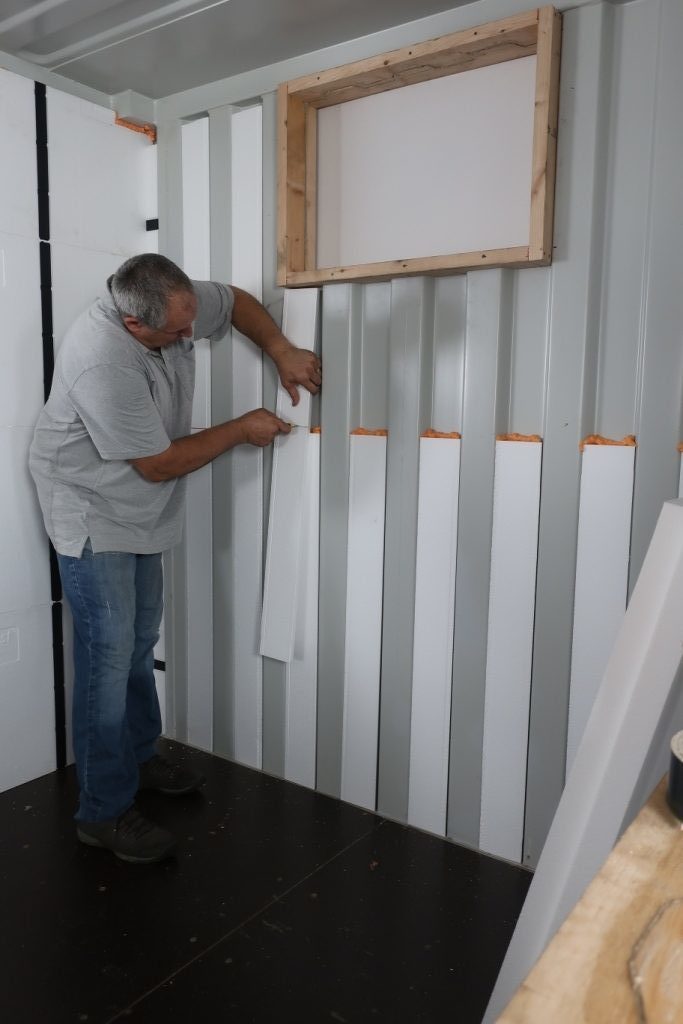
The Endwall of a shipping container interior applications. If you just need to just insulate a container for storage and covering the insulation for fire safety and protection is not a concern we recommend the (I-EWI) Side Wall Inserts to infill the wall’s corrugated voids to prevent hidden condensation. The flat stock foam panels and inserts is a two-step process insulated first with the (I-EWI) Endwall Inserts to infill the wall’s corrugated voids preventing hidden condensation. Then locally sourced (48″ x 96″) flat stock sheet insulation are installed over the inserts completing the continuous thermal layer before the traditional interior framing and services can be installed. This is the least expensive method available but increases the labor, material co-ordination and complexity in detailing.
- Inexpensive method when modifying older containers with dings and dents prevent cold condensation surfaces.
- Method when modifying older containers with dings and dents.
- Industrial fast track application not suitable for habitual spaces, storage only.
- Check with local code restrictions for exposed foam insulation fire requirements.
- Traditional framing, wood or steel studs, would need to be installed with drywall and optional additional insulation in order to make the container into a habitable space
Sidewall Inserts:
- (I-EWI Endwall Inserts) = 20 pieces 48 inches long covering 80 lineal feet of corrugation in-fill or (10) 8′ tall sections
Installing Endwall Inserts into a Container
The Endwall of the shipping container insulated with Endwall Inserts.

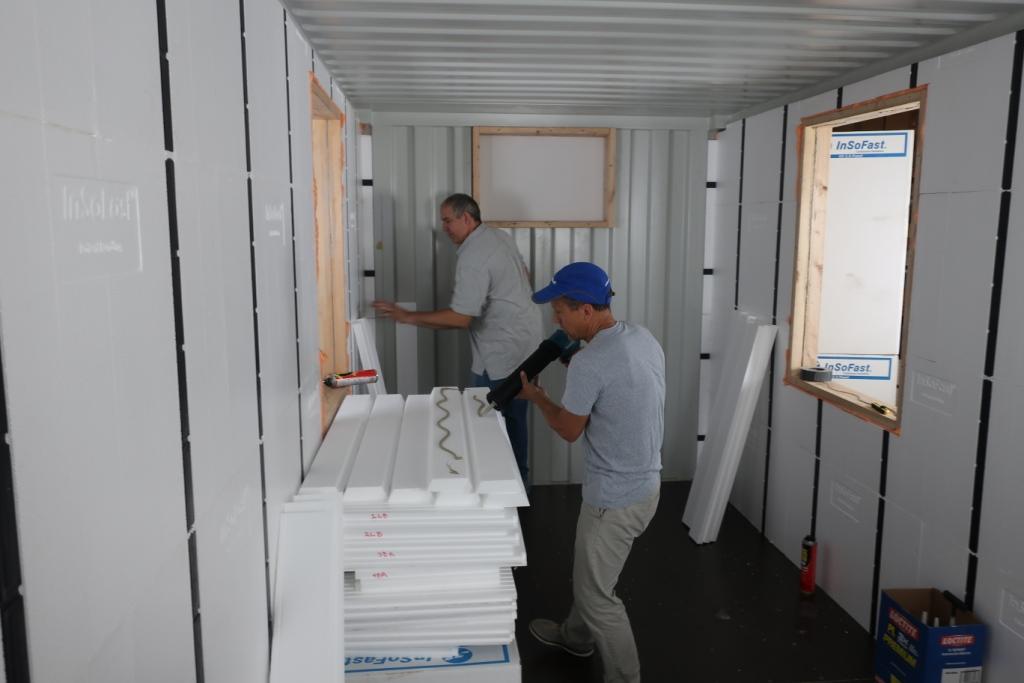
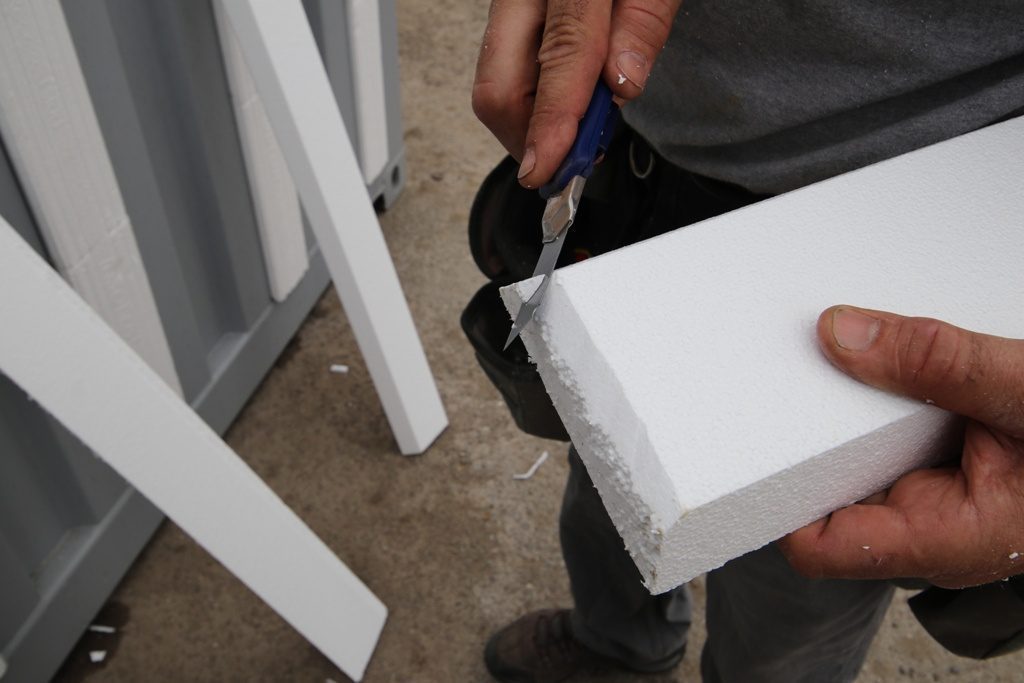
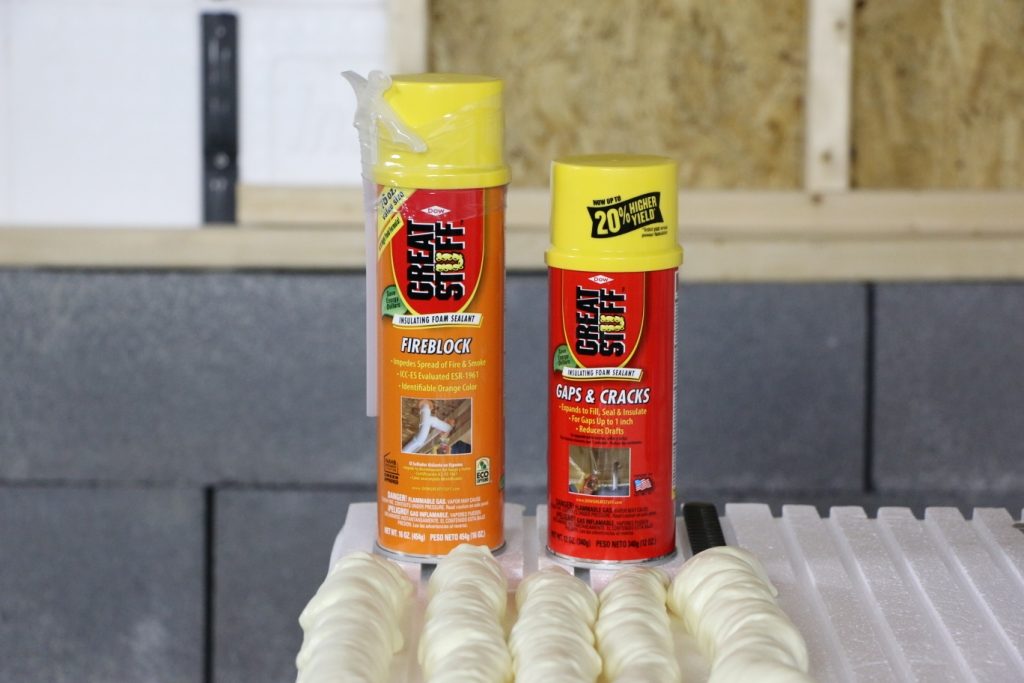
The Endwall of the shipping container is a three-step process using endwall inserts, locally sourced flat stock sheet foam, and traditional framing systems.Place a bead of adhesive in an “S” pattern down the center of the backside of the endwall insert.Continue to cut, fit and glue all the insert onto the endwall corrugations.Spray foam and seal all your work.
Flat board stock or sheet foam and framing by others.
Products Required
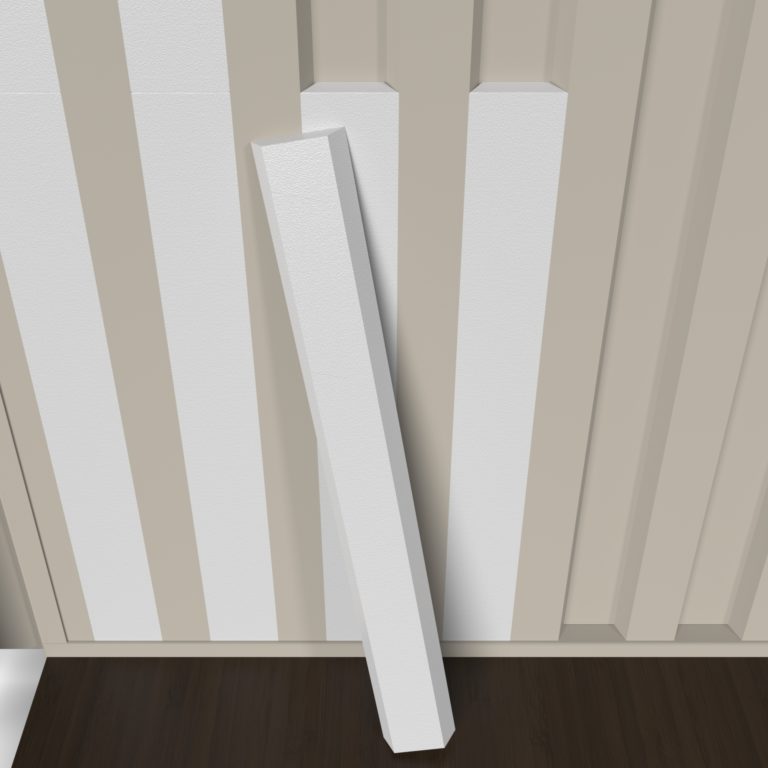
| See Diagram | zip file |
| Insert Dimensions | 5 1/4 in × 48in × 1 5/8 in |
| Coverage per pcs | 1.75 sq-ft |
| One Box -20 inserts 4′ long | (covers 35’ Sq-ft) |
| Interior side of the end wall | 1 boxes |
| Exterior side of a the end wall | 1 boxes |
| R-Value ASTM C518 | R-4.24 per in |
| ASTM C578 Type II | Closed-Cell, injection-molded EPS |
| Canadian Standard CAN/ULC S701 Type 2 | |
| Foam Density | 1.35 lbs per cubic foot |
| Interiors | √ |
| Exteriors | √ |
| Shipping Containers | √ |
Installing Panels on the End Walls
Insulating the Endwalls
The Endwall of the shipping container is a two step process and is insulated with Endwall Inserts either the UX 2.0 or EX 2.5 flat panel. These panels are 48″ x 24″ and are installed on end wall.
Install either the UX 2.0 or EXi 2.5 Flat Panels
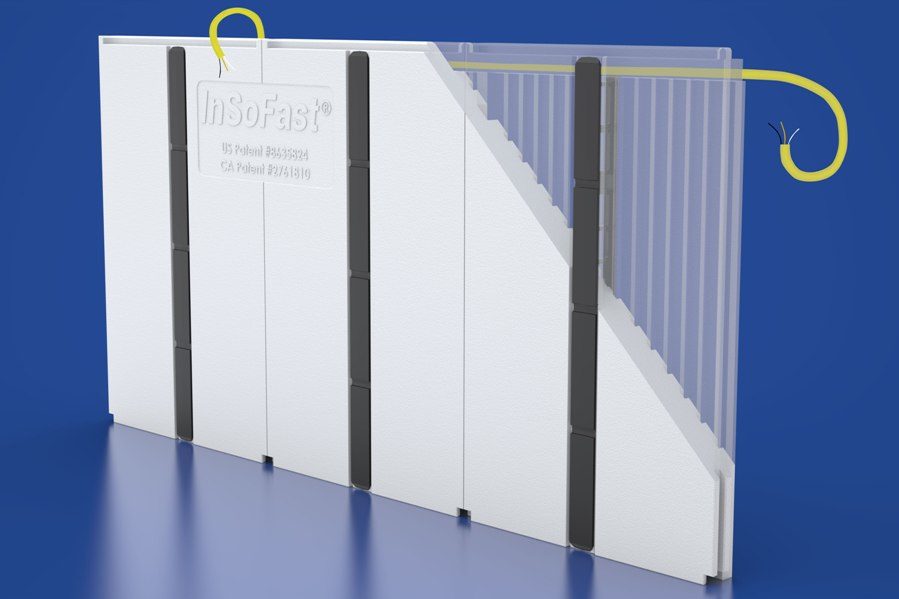
UX 2.0 Flat Panels
2″ thick of closed-cell, injection-molded EPS foam body achieves R-8.5 insulation The UX2.0 is our thinnest flat profile panel, optimized for flat surface interior finishing. The UX 2.0 will work on floors, walls, ceiling and can be adapted for shipping container construction or other unique applications. It is a good choice as a base panel for the InSoFast PLUS when higher R-Value is needed.
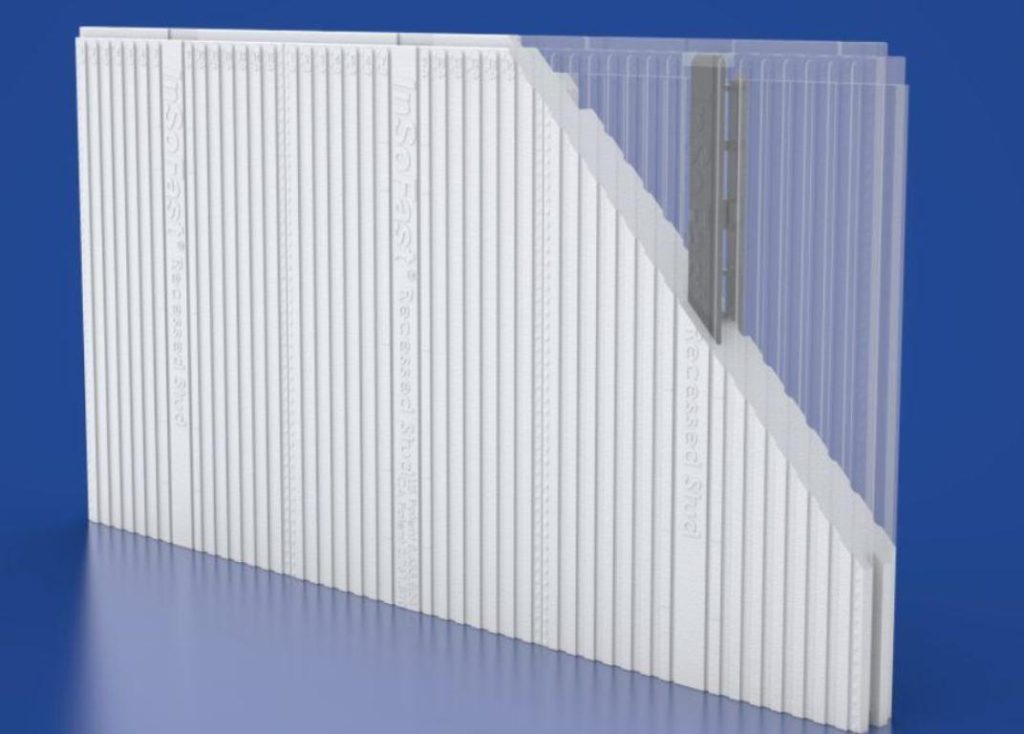
EXi 2.5 Flat Panels
2 1/2″ thick of closed-cell, injection-molded EPS foam body achieves R-10 insulation. The EXi Flat Panel is optimized for interior finishing. The panel will work on floors, walls, ceiling and can be adapted for shipping container construction or other unique applications. It is a good choice as a base panel for the InSoFast PLUS when higher R-Value is needed.
Glue the Endwall Inserts

Start with a continuous bead of spray foam or adhesive along the bottom of the end wall of the container. Next lay a bead of adhesive in an “S” pattern down the center of the backside of the End Wall Insert. Set the inserts into the lower half of the end wall corrugations. Once in place seal the top of the insert with a bead of spray foam. Continue to cut, fit and glue all the insert into the end wall. Spray foam and seal all your work.
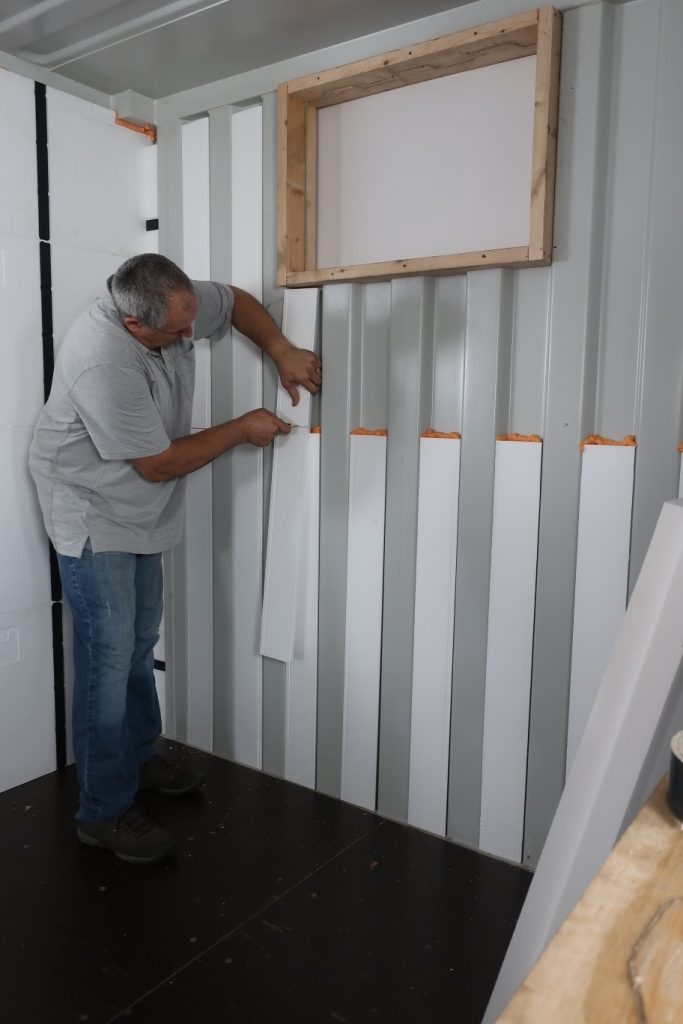
Install the Flat Panels
Add a bead of PL Premium 3x along the corner where the first row of panels meet the corner of the container.
We recommend installing panels standing on end with the embedded studs running perpendicular to a shipping containers corrugated ribs. The goal is to provide as much contact between the studs and steel in order to maximize the holding power of the studs.
You may want to trim the end of the UX or EX panel to “move” the stud down closer to the floor allowing baseboard to be attached. On the back of the panel, run a 3/8″ bead of adhesive along dove-tailed ribbing of each stud.
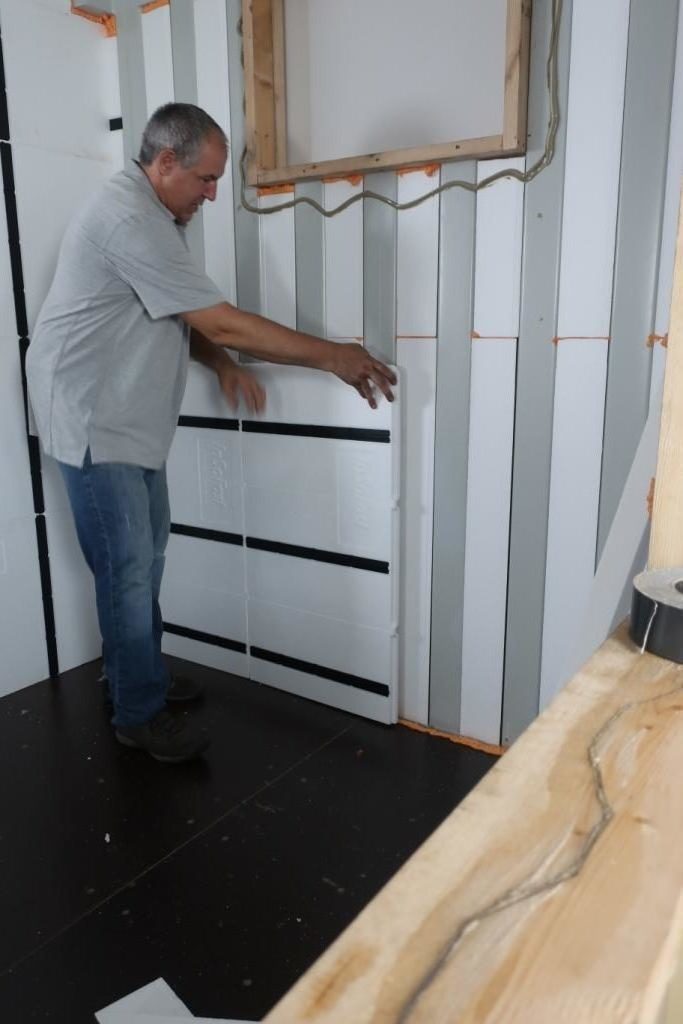
For a standard 8’ high container, the panels can be installed in a stacked method or a running bond pattern. The running bond pattern works better to eliminate waste on a 9’ high container. Use the cut off end of the top panel to start the next column.
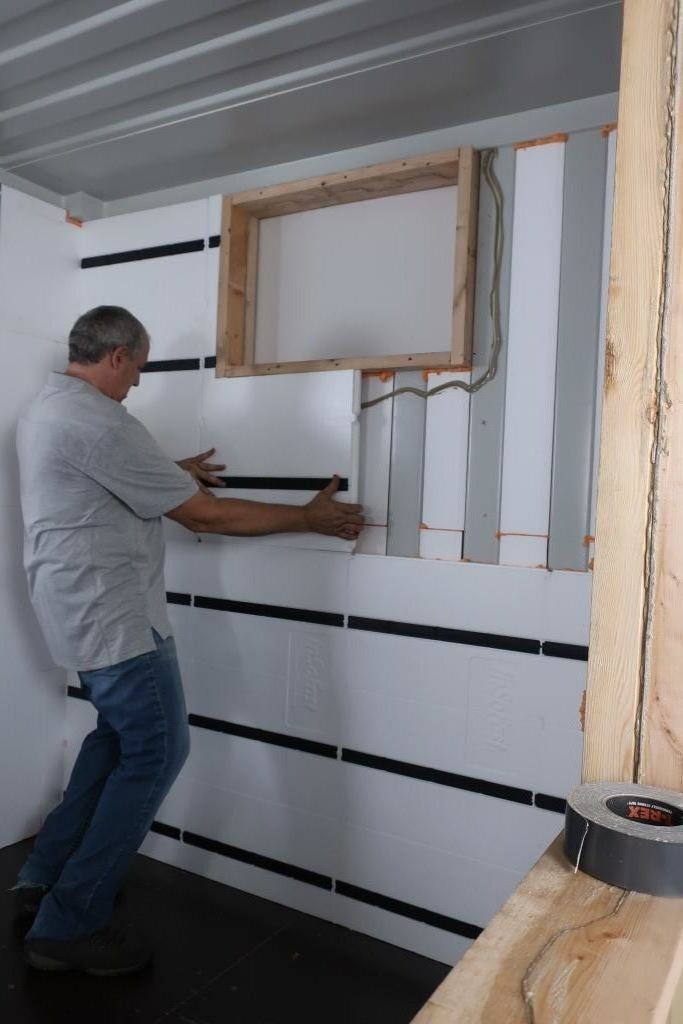
Seal the gaps at the tops and edges of the corners with spray foam.
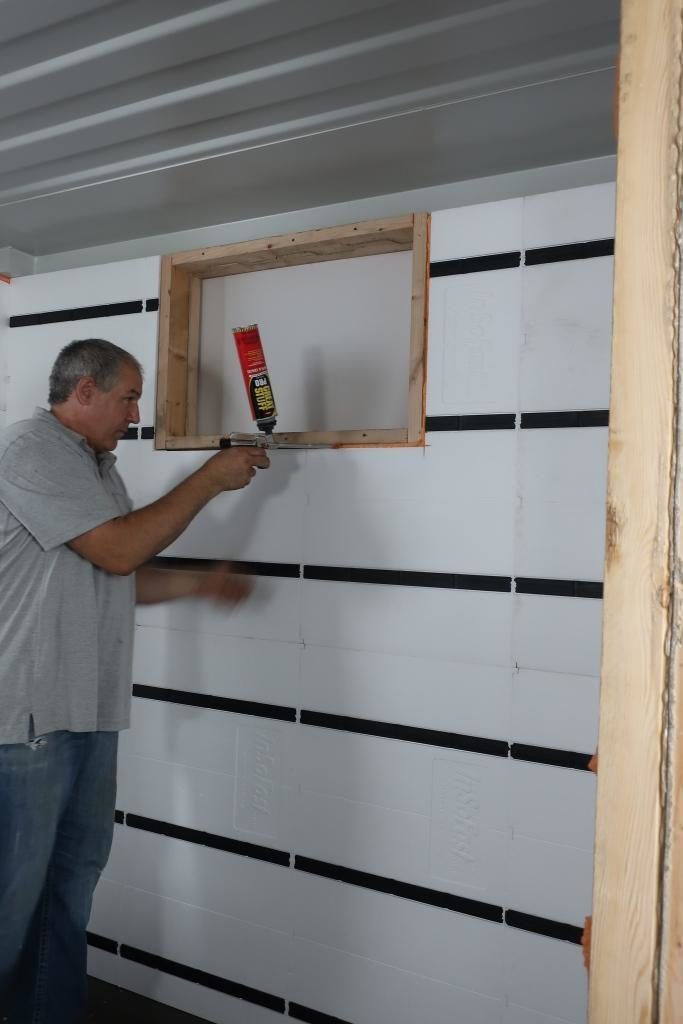
We do not recommend installing UX 2.0 or EX 2.5 panels without the Inserts. The Inserts are needed to prevent convective looping behind the wall. If the end wall inserts are not used, seal the corrugation with spray foam at every 4’ height horizontally to minimize the convective loop.
LowPro and Insert Installation
CX-LPEW LowPro a hybrid engineered solution for insulating containers. It is versatile and can be used for end walls on the interior or exterior of a shipping container. The CX-LPEW studs are ideally suited for inter-modal container conversions and industrial applications where thin wall insulation and framing is the primary concern. If you are (not planning to embed) electric services like wiring in the wall, or if you are planning surface mounted electrical conduit. One of the many benefits to the CX-LPEW stud, is it’s smaller size making them easier to handle and modify for older containers. The insulated stud eliminates framing cold spots and fastener condensation when insulating a container.
The CX-LPEW is a hybrid method for insulating a shipping container addresses limited rural delivery and overseas freight charges. CX-LP insulated stud method utilizes foam insulation that you source locally. Flat foam board purchased locally reduce bulk shipment costs.
First Things First!
Installing opening into a Container
Safety Precaution: Cut out all openings in the container and complete any welding, cutting or grinding operations prior to installing InSoFast panels. Do not expose the foam insulation or plastic studs of InSoFast panels to the flames, heat or sparks generated by welding, grinding or cutting on the steel container after panels have been installed.
See this page for in depth instruction for installing wood bucks. MORE
CX-LPEW Insulated Studs interior application
The Endwalls of the shipping container using the LowPro Stud is a three step process and is insulated with endwall Inserts and locally sourced 3/4″ thick sheet foam insulation.

The adhesive applied CX-LPEW eliminates the hundreds of holes associated with shipping container or sea can modifications. The LP EW stud is part of a assembly to work with the Endwall Bundle. The corrugation infills are typically placed on alternating pattern with the (EWI) side wall inserts. LPEW used in this configuration with 1/2″ thick finishes, very little interior space is lost.
Installing the LowPro Insulated Studs
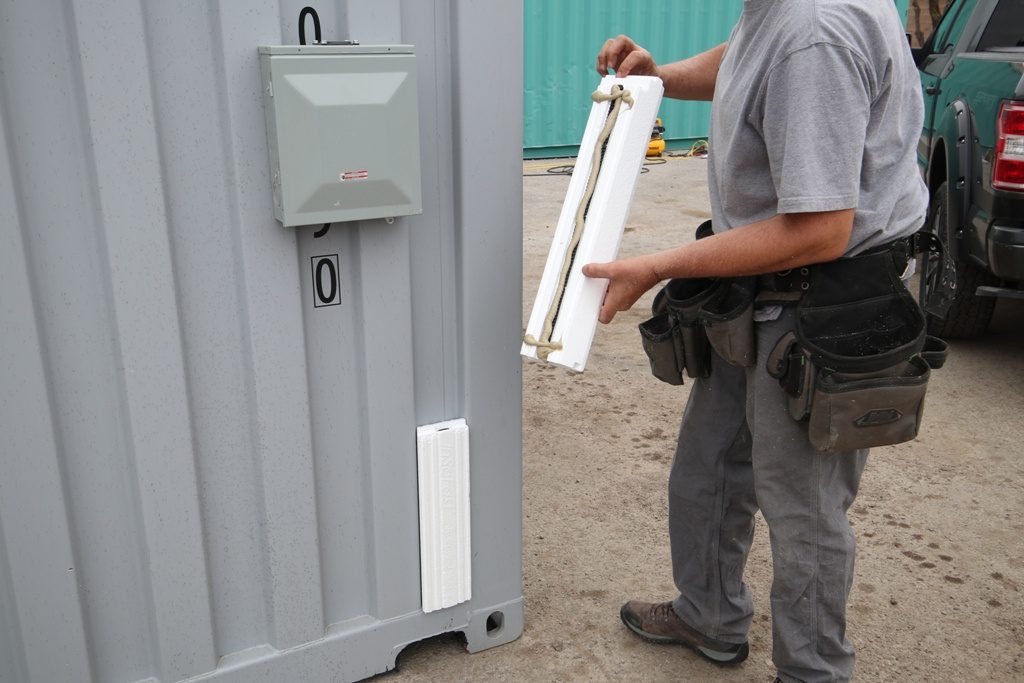
Apply a 3/8″ bead of Loctite PL Premium 3x construction adhesive horizontally across the top and bottom then directly over the ribbed surface of the backside of the stud to form “I” pattern.
The LowPro studs are set in an off set pattern every other corrugation.
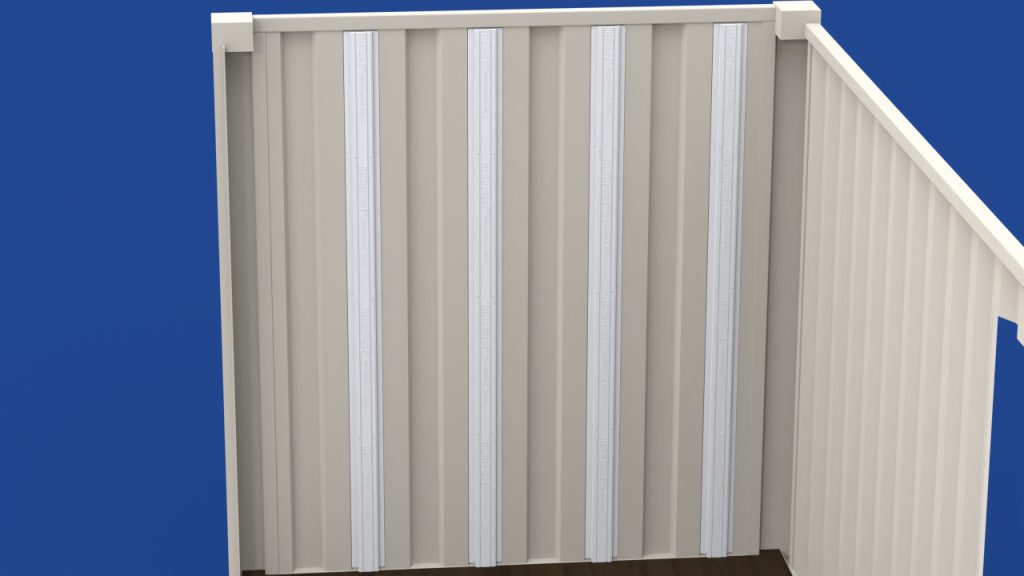
Installing insert infill insulation
Install insert insulation in-between the LP-EW .

Place a bead of adhesive in an “S” pattern down the center of the backside of the sidewall insert. Or the adhesive can be applied across the width of the insert to secure the endwall of the shipping container.
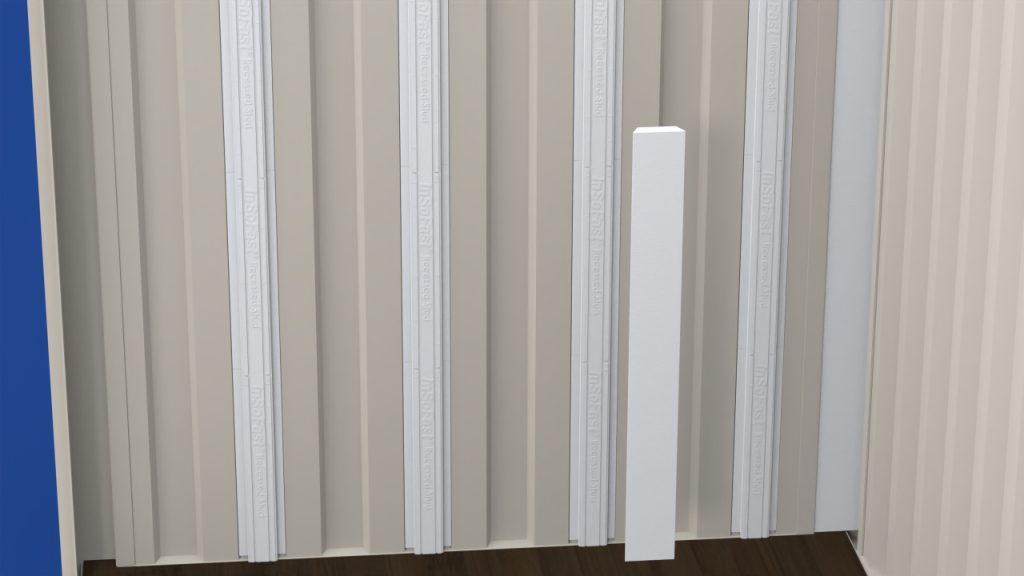

Continue to cut, fit and glue all the insert onto the endwall corrugations. The LowPro studs and inserts can be cut to fit with regular wood working tools or razor knife.
Set the inserts into the lower half of the sidewall corrugations. Alternate the LowPro studs or the endwall inserts.
Installing the the locally sourced 3/4″ sheet insulation
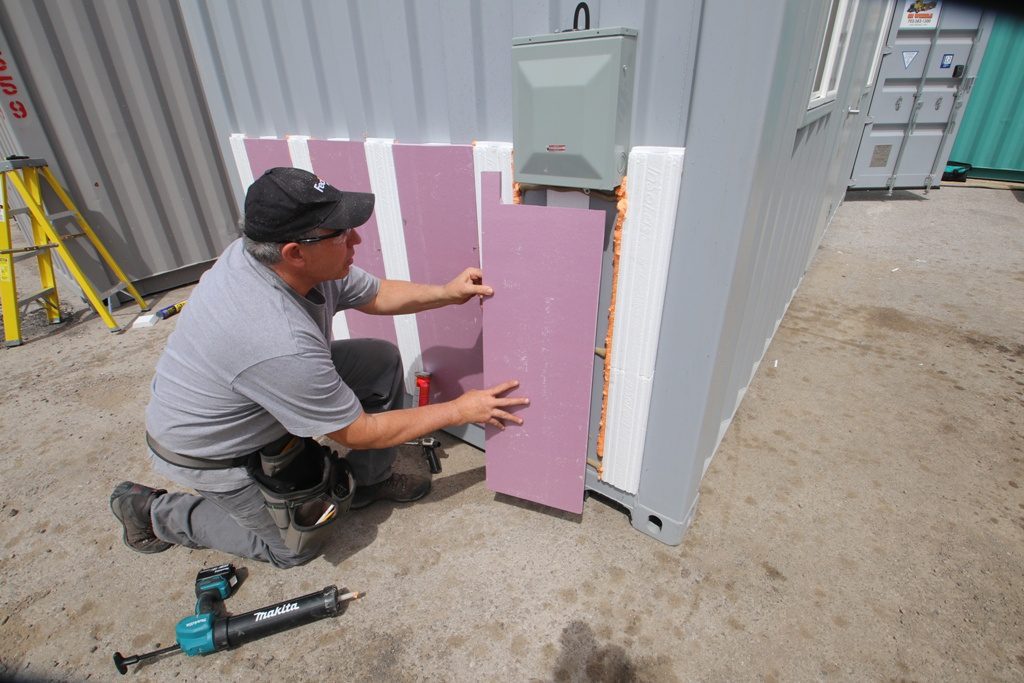
Install the the locally sourced 3/4″ sheet insulation.
When the LowPro Studs are installed in an alternating pattern of ” on center, the sheet foam is cut from a 48″ x 96″ (3/4″) into 12″ wide panels.
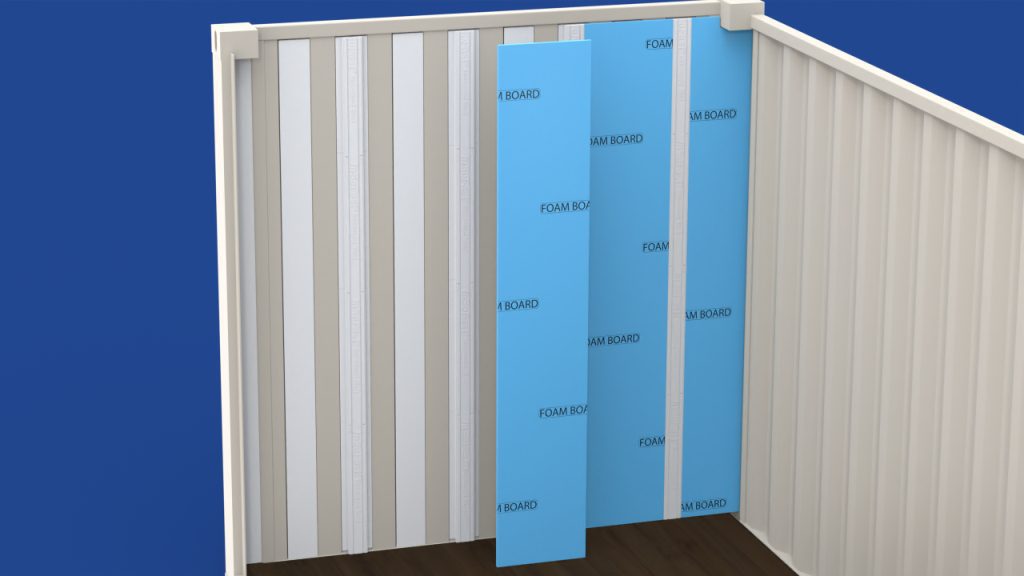
Insert 12” wide sheet foam between the LowPro Inserts. It is highly recommended that the 3 components be install at the same time. Once install tamp the panels with a straight edge like a 2×4 lumber to make sure that the wall is level and flat. Spray foam and seal all your work.
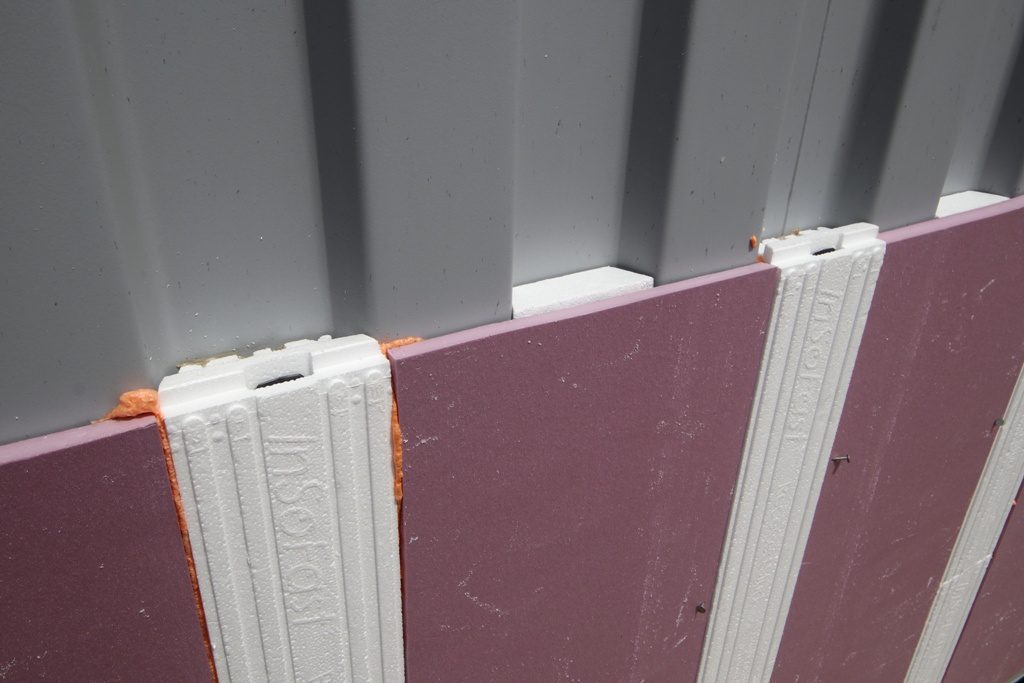
Nails were used to hold the sheet foam in place until the adhesive sets.
Finishing the insulation and framing
Trim away any excess spray foam and the wall is ready for finishes.
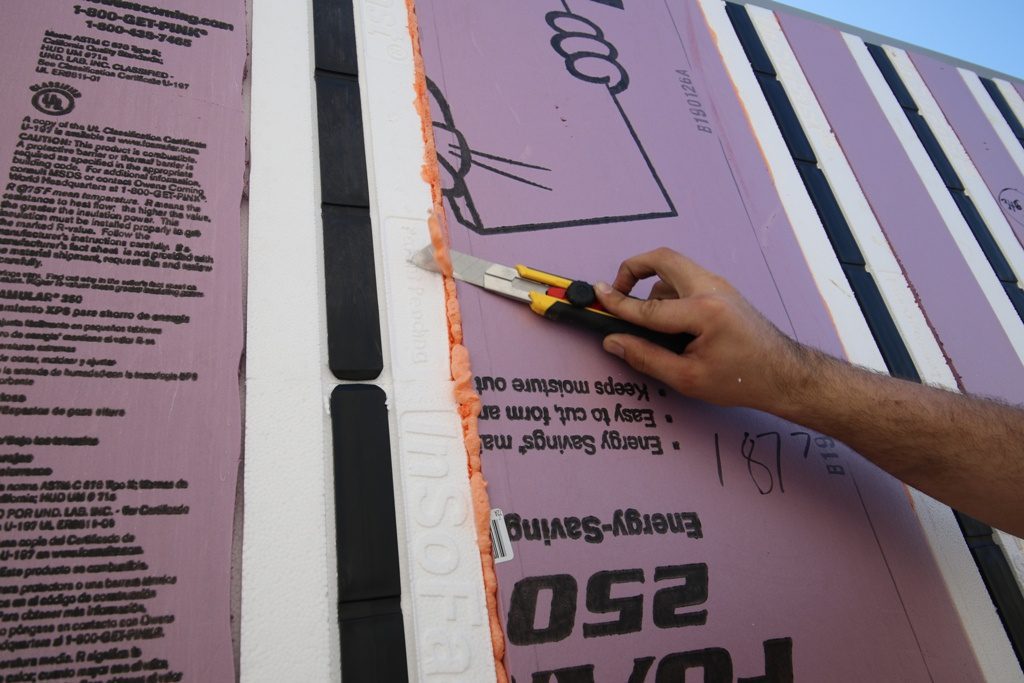
The LowPro’s versatility of traditional framing without the energy penalty of steel or wood studs. In this example the LowPro studs provide extra attachment around a window opening.
Products Required
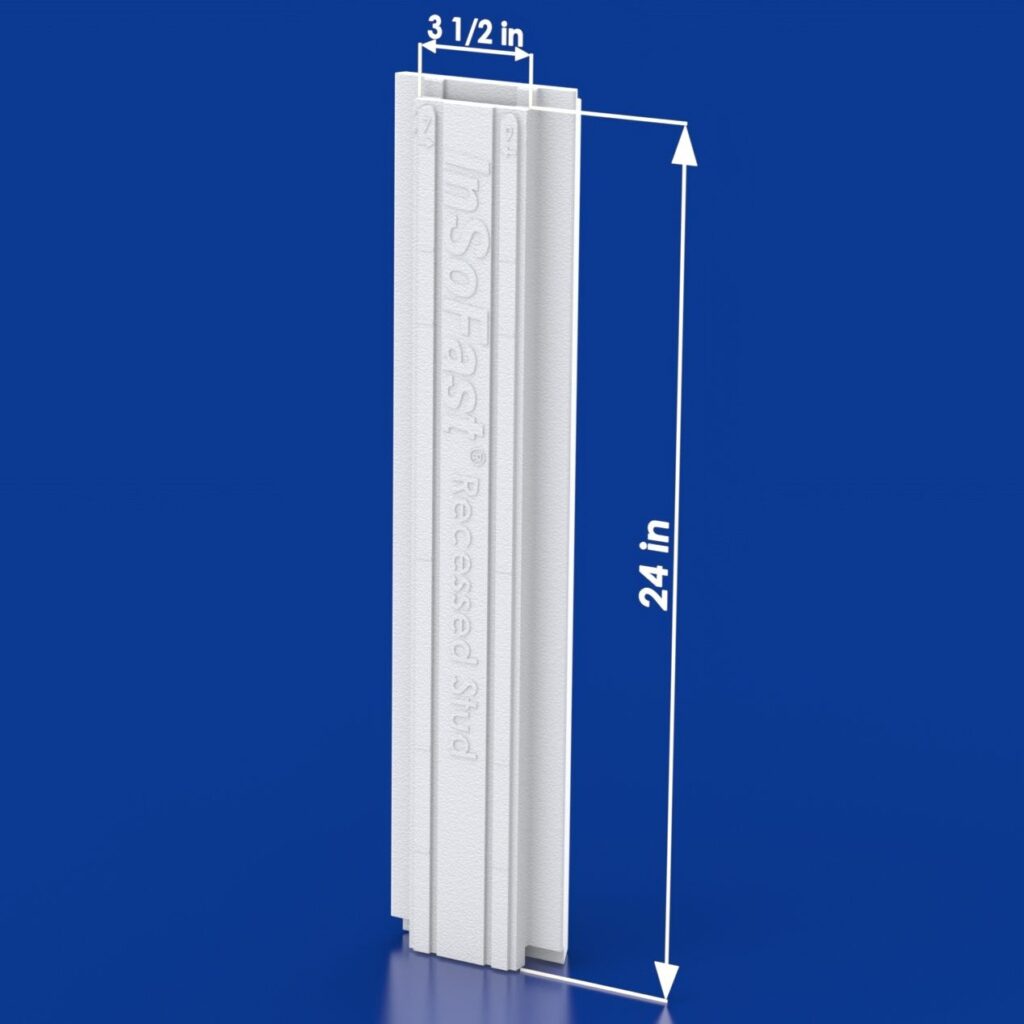

End Wall or the containers nose 36 lineal feet of corrugation.
| CX LowPro-Side Wall Architectural Details | dwgdxfpdf CX-EW Zip | jpgzip file |
| Dimensions | 5 1/2in × 24in × 2 1/2 in | 5in × 48in × 1 3/4in |
| Coverage | 1.00 sq-ft | 1.67 sq-ft |
| R-Value ASTM C518 | R-10.5 | R-7.5 |
| Closed-Cell, injection-molded EPS | ASTM C578 Type II | ASTM C578 Type II |
| Canadian Standards | CAN/ULC S701 Type 2 | CAN/ULC S701 Type 2 |
| Foam Density | 1.35 lbs per cubic foot | 1.35 lbs per cubic foot |
| Polypropylene Studs | Surface | N/A |
| Ready for Finishes | √ | √ |
| Interior | √ | √ |
| Exterior | √ | √ |
The high-strength co-polymer plastic studs on 11 or 22-inches centers provide a positive attachment stud for finishing the container. The ribbed dovetails surface provides for adhesive applications against the metal surfaces.


